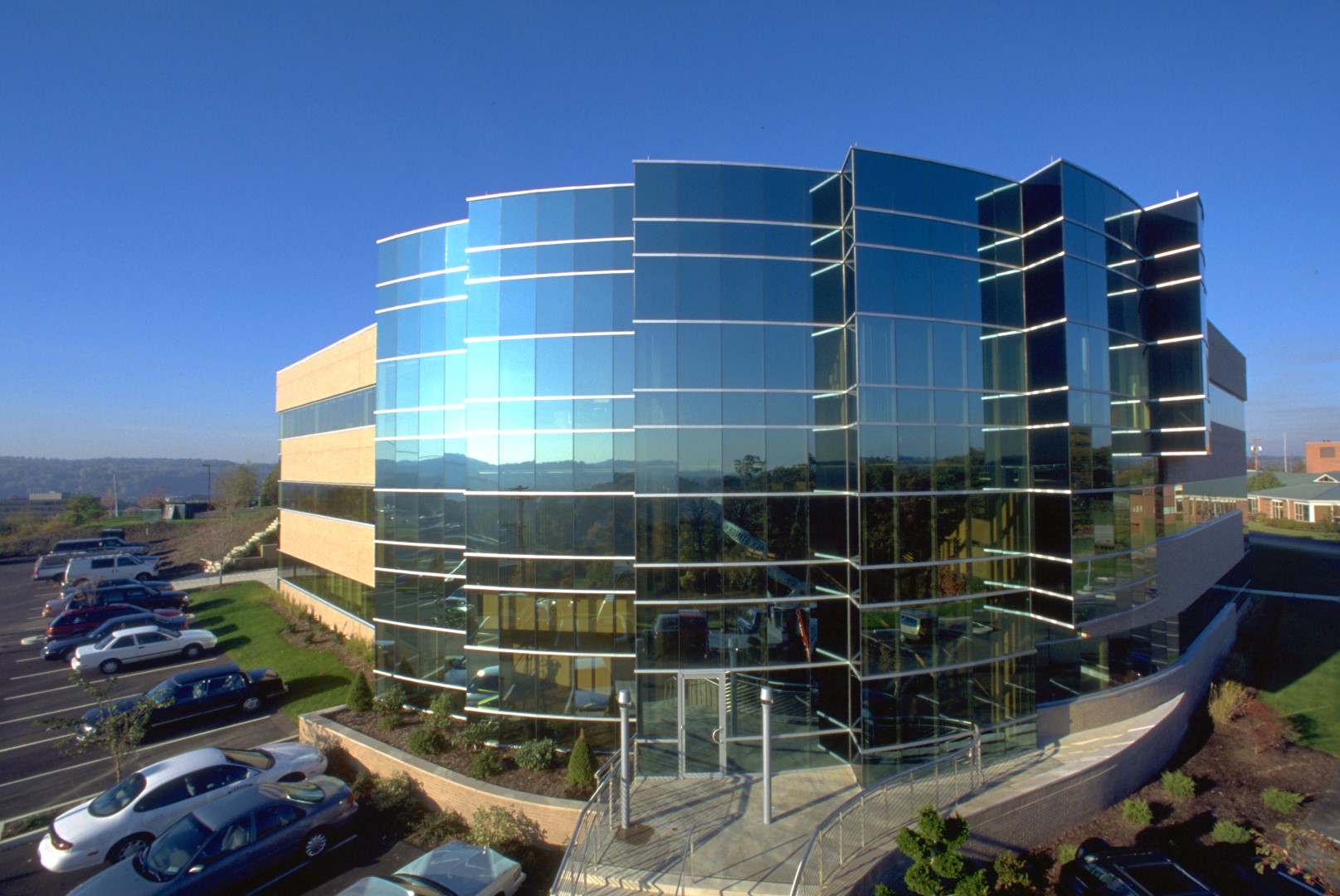
In 1997, Graciano’s New Construction Division undertook its first project by building the new headquarters building for Graciano Corporation. Situated on a steeply sloped site that provides stunning views of the rolling hills that surround suburban Pittsburgh, the building is designed in a freeform shape that accommodates the terrain and provides maximum floor space. The structure features column and beam construction coupled with poured concrete sub floors. The exterior of the building is skinned in brick and accented with ribbon window treatments outfitted with tinted glass and brushed aluminum trim.
Project Details
Name: Graciano Corporate Headquarters
Completion Date: 9/22/1997
Architect: Graciano Corporation
General Contractor: Graciano Corporation
Project Included
- Wet & Dry Shotcrete
- Sealants
- New Brick Construction
Glossary Terms
Tuck PointingTuck pointing entails removing loose or cracked mortar from brickwork or stone installations and replacing its new mortar to ensure structural integrity and to seal out damaging water and moisture. Mortar for tuck pointing must be carefully selected to ensure that its color and texture of the new mortar closely matches the existing material that was not compromised and did not need to be removed.
ShotcreteShotcrete is a material that combines concrete with compressed air. The mixture is pumped through a hose at high pressure, and is then applied to the desired surface. The force of the air pressure consolidates the material on the surface. Shotcrete can be formulated in one of two ways. The wet method premixes the concrete with water before it is pumped through the high–pressure hose. The dry method involves sucking the dry materials into the application system, combining them with water within the hose, and then apply them to the final surface.
Masonry RestorationMasonry restoration involves the repair of existing masonry materials or the complete replacement of damaged materials with new or reclaimed bricks or stones. Color and texture matching are key considerations in masonry restoration, as an accurate match can make areas of restored stone or brick blend in seamlessly with existing materials. To achieve an accurate color and texture match, it is frequently necessary to return to the original brick manufacturer for replacements, or to the original stone quarry where material for the existing stone components was cut.
GroutingGrouting is used to seal the spaces between masonry installations such as tile or terra cotta. Grout may be colored to blend with the masonry materials, or can be used to create contrast within the masonry design. Grout is typically applied by hand by filling the joints with material and then troweling it out over the adjoining tile or terra cotta. Once the grout has set, a craftsman returns to the area that was grouted and removes any excess material from the face of the installation. As grout is frequently porous, it must be sealed once it is completely dry to protect it from dirt infiltration.
DemolitionDemolition entails the removal of damaged or undesired concrete. It is most frequently accomplished with a jackhammer or another piece of pneumatic equipment.
CaulkingCaulking is used to seal gaps between masonry surfaces, such as brick or stone, and other architectural elements, including window and door frames, decorative hardware or lighting fixtures. Caulking is most often applied with a gun, and is available in butyl, latex or customized formulations. The color of caulk is selected to match the surfaces surrounding the application site. When applied, the caulking gun is inserted in the gap to be filled. Caulking material is then injected into the void to seal the opening.


